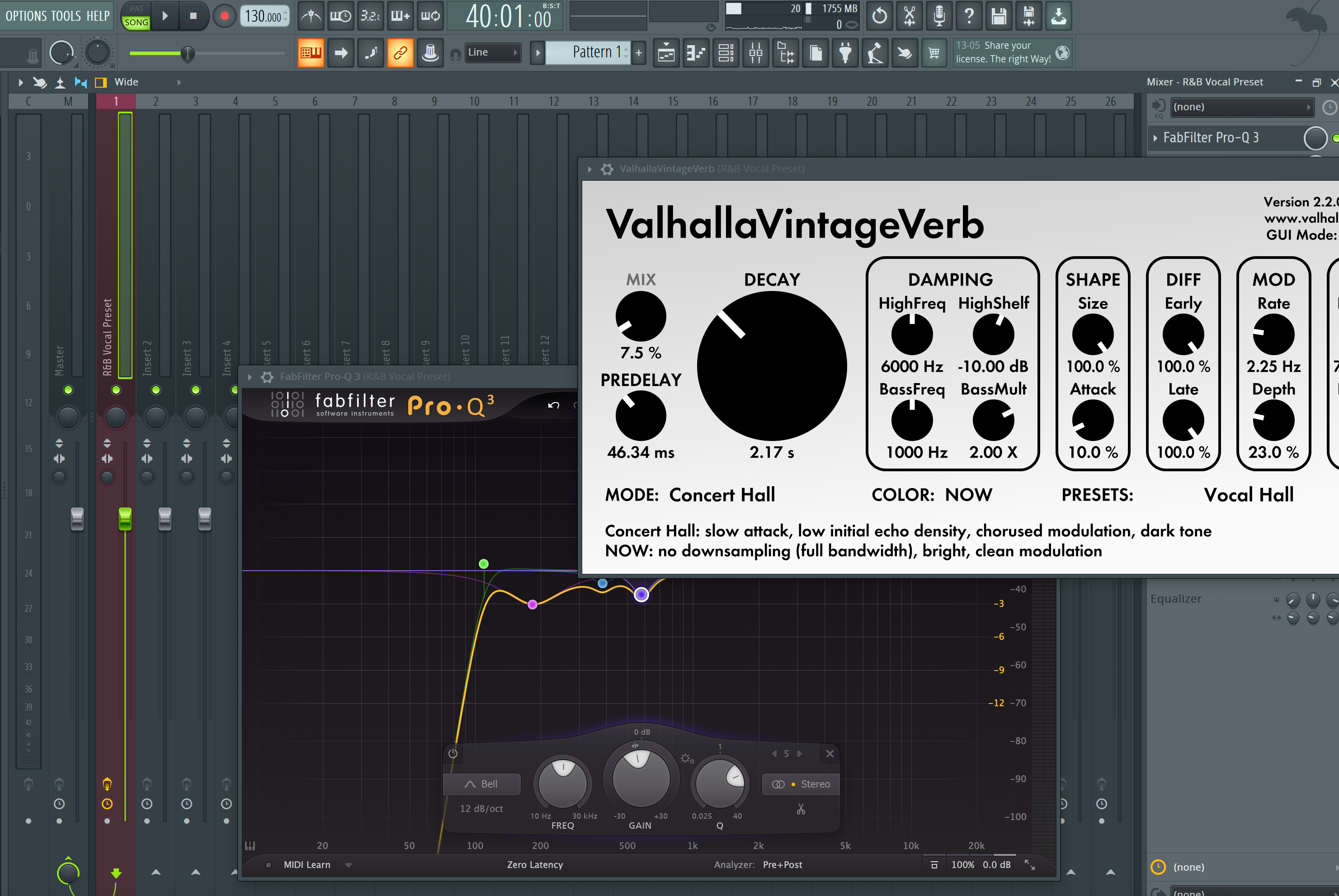This guide shows how to adapt any vocal preset to your voice quickly and predictably: set input, shape tone, dial control, and place space that translates to earbuds, speakers, and the car.
I. Start with your “voice print”
Your voice has a repeatable fingerprint: brightness, sibilance, density, and transient sharpness. Identify those traits first, then nudge the preset toward them.
- Brightness: Do your S’s sparkle or pierce? Listen on earbuds.
- Density: Thin vs full at low volumes.
- Transient bite: Plosives and consonants that jump out.
- Room reveal: Ring, flutter, or low rumble.
Terms, quickly: dBFS is digital level (0 dBFS clips). LUFS is perceived loudness. True peak (dBTP) estimates inter-sample spikes that can clip converters.
II. Adaptation map (match trait → tweak)
| Voice trait | What you hear | Preset tweaks |
|---|---|---|
| Bright / hissy | S’s sting, cymbals compete | De-esser first in chain (5–8 kHz, wide); reduce high-shelf −1 dB |
| Dark / veiled | Words dull in busy hooks | Gentle presence +1 dB at 3–4 kHz; slower release on Comp 1 |
| Thin / airy | Feels small at low volume | Low-mid support +1–2 dB at 160–220 Hz; parallel comp 10–20% |
| Boomy / muddy | Kicks fight the vocal | High-pass 80–100 Hz; narrow cut 200–350 Hz |
| Harsh consonants | T, K, P pop out | Longer attack on Comp 1; transient shaper sustain −5–10% |
| Roomy / reflective | Flutter and ring | Closer mic + pop filter; gate/expander light; shorter reverb decay |
III. Quick-fit workflow (8 reliable moves)
- Trim honestly. Record loud lines, then set input so peaks land around −12 to −8 dBFS.
- Place de-ess early. Broad band at 5–8 kHz before any exciters or tape stages.
- Cut mud, don’t boost first. High-pass, then one decisive notch for boxiness.
- Anchor with Comp 1. Aim for 3–6 dB gain reduction; adjust release so it relaxes by the next word.
- Add color with restraint. Saturation for density; level-match output so “louder” doesn’t fool you.
- Guide the handshake with the beat. Small dynamic EQ on vocal or sidechain a narrow dip on the beat only when you sing.
- Time your space. Delay 1/8 or 1/4; reverb pre-delay 20–60 ms; automate sends by section.
- Catch peaks gently. Fast second compressor or limiter kissing 1–2 dB; recheck bypass within 0.5 dB.
IV. Fit by context (rapid recipes)
Over a bright 2-track. Ease the high-shelf −1 dB, widen the de-esser band, and try a darker plate. If cymbals crowd 6–8 kHz, move S focus slightly higher.
Pop duet or stacked harmonies. High-pass stacks higher, de-ess more than the lead, and keep saturation lower so the lead owns the shine.
R&B ballad. Longer pre-delay (40–60 ms), slower release on Comp 1, and a subtle 1/8 note echo for depth.
Aggressive rap. Shorter release, minimal reverb, tight slapback. If consonants splat, lengthen attack a touch.
V. Micro-problems → micro-fixes
- Words vanish in the hook: +1 dB at 2–3 kHz or raise delay send; shorten reverb decay.
- S’s jump out on phones: Expand de-ess range; reduce high-shelf −0.5 to −1 dB.
- Vocal vs bass wrestling: Lift high-pass a few Hz; dynamic dip on bass 120–180 Hz keyed to vocal.
- Preset feels over-compressed: Lower ratio or blend parallel 10–20% instead of crushing inserts.
- Breaths too loud: Post-chain clip gain −2 dB on breaths; avoid gating words.
VI. Make it portable (save once, tweak fast)
Save a base for your voice. Name it “YourName_Base (peaks −10 dBFS).” Future sessions will need only input trim, one EQ move, and sends.
Split pitch from tone. Keep heavy pitch correction on its own lane. Doubles and harmonies rarely need identical tuning.
Document the sweet-spots. Add notes: HPF value, Comp 1 release time, de-ess band. That becomes your personal recall sheet.
VII. FAQs
Do I chase a LUFS number on the vocal?
No. Loudness targets belong on the full mix. Keep the vocal controlled and natural.
Where should de-essing sit?
Usually before color. If S’s still poke, add a lighter second de-ess later.
Can one preset work across genres?
Yes—when you adapt the few stages above. Most changes are 1–2 dB, not rewrites.
Why does the preset break in the car?
Car playback exaggerates 2–4 kHz. Recheck presence and de-ess balance, then verify at matched loudness.
Conclusion
Fitting a preset to your voice is fast once you know what to listen for. Trim, tame, shape, and time your space—then save the result. If you want chains built for common voice types and DAWs, explore the curated vocal presets collection and personalize the last 10% for your record.













